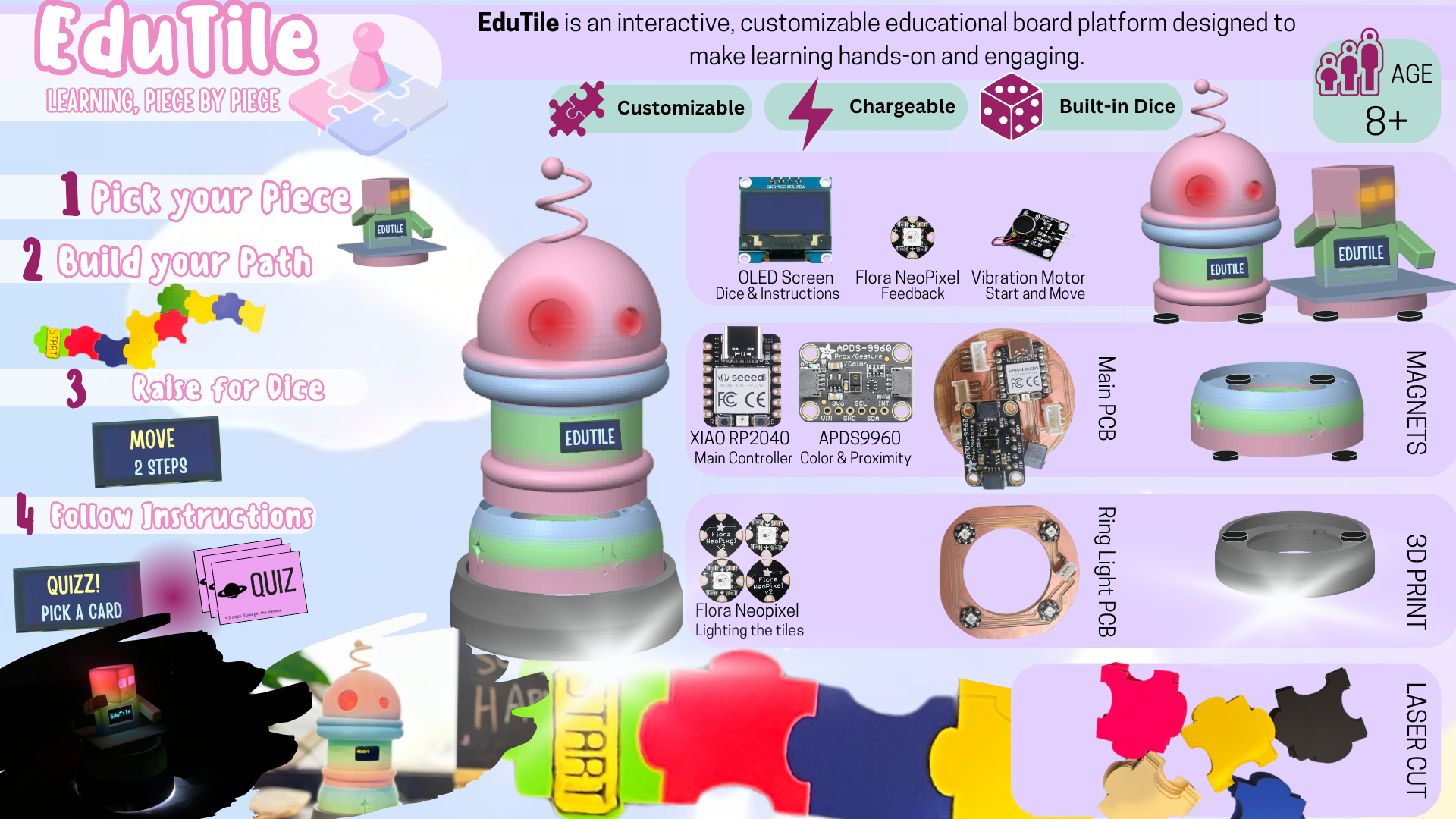
git
Git is a distributed version control system that tracks changes in any set of computer files.

As an educator and trainer at Fab Lab Bahrain, I’ve had the opportunity to work closely with young learners through the SPARK program — a hands-on STEM experience that introduces children aged 8–12 to electronics, fabrication, and design thinking.
Through this experience, I noticed how students naturally learn through interaction and storytelling. I also realized the importance of having tools that let educators easily adapt content based on their teaching goals. That’s where the idea for EduTile came from — a project rooted in my passion for making science fun, accessible, and customizable for learners and teachers alike.
EduTile is more than a technical integration of electronics and design — it’s a response to a real need I saw in the classroom. It allows students to touch, feel, and engage with learning material, while giving educators the flexibility to design their own educational narratives. Whether it’s identifying colors, responding to gestures, or triggering outputs like vibrations and lights, EduTile turns the learning process into an immersive experience.
I plan to integrate EduTile into future SPARK sessions at Fab Lab Bahrain, where it can be used to:
This project is deeply connected to my journey as an educator, maker, and curious learner. It allowed me to synthesize the skills I’ve learned in the Fab Academy — from electronics to embedded programming and 3D design — into something that speaks to my core mission: empowering young minds through making.
EduTile is a modular, interactive educational tool that combines electronics, physical puzzle elements, and customizable content for teaching STEM topics. It responds to gesture input using a color/gesture sensor, and provides feedback via a vibration motor, RGB LEDs, and an OLED screen. It is designed for educators and students to interact with tactile pieces that support learning through play.
EduTile is inspired by interactive board games, learning systems like Osmo, Cubetto, and Blue Home (my own 2021 Fab Academy final project). These systems use tangible interfaces to facilitate learning. EduTile builds on this by allowing content customization and system modularity, while integrating sensors and outputs seamlessly into the puzzle pieces.
I used documentation from:
Total cost: approximately $40
EduTile was evaluated by:
EduTile introduces a customizable learning tool that merges physical interaction and digital logic. It can be adapted by educators worldwide to fit local curriculum. It promotes hands-on learning, system thinking, and creative problem-solving. It could be expanded into a toolkit or kit platform in future.